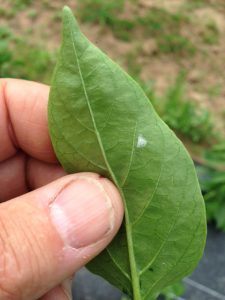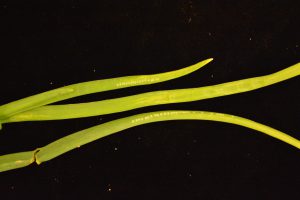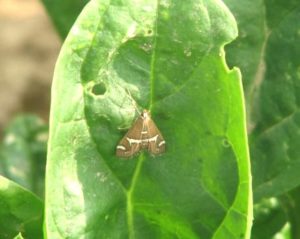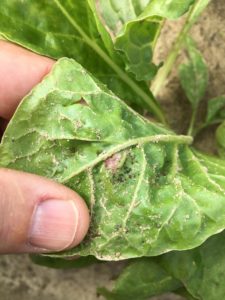Sweet Corn
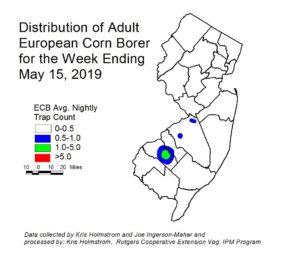 Most of the IPM Program black light trap network is now operational in New Jersey. To date, no corn earworm (CEW) have been captured. However, low numbers of European corn borer (ECB) moths are now appearing in a number of traps (see map at left). This is the onset of the first flight of the season. As yet, most corn is too young to support an infestation, although early plantings grown under plastic will be at risk first. As numbers increase and corn plantings progress into the whorl stage, growers should begin scouting for injury. Look for the characteristic “shot-hole” type of feeding (photo below at right) and consider treating when
Most of the IPM Program black light trap network is now operational in New Jersey. To date, no corn earworm (CEW) have been captured. However, low numbers of European corn borer (ECB) moths are now appearing in a number of traps (see map at left). This is the onset of the first flight of the season. As yet, most corn is too young to support an infestation, although early plantings grown under plastic will be at risk first. As numbers increase and corn plantings progress into the whorl stage, growers should begin scouting for injury. Look for the characteristic “shot-hole” type of feeding (photo below at right) and consider treating when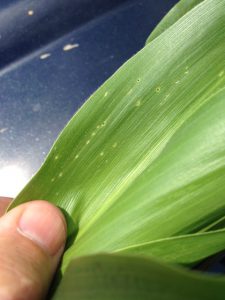 infested plants exceed 12% in a 50 plant sample.
infested plants exceed 12% in a 50 plant sample.
The highest nightly trap catches of ECB for the week ending 5/15/19 are as follows:
| Downer 2 | Cinnaminson 1 | Medford 1 |
| Beckett 1 | Elm 1 | South Branch 1 |
| Bellemeade 1 | Georgetown 1 | Woodstown 1 |
